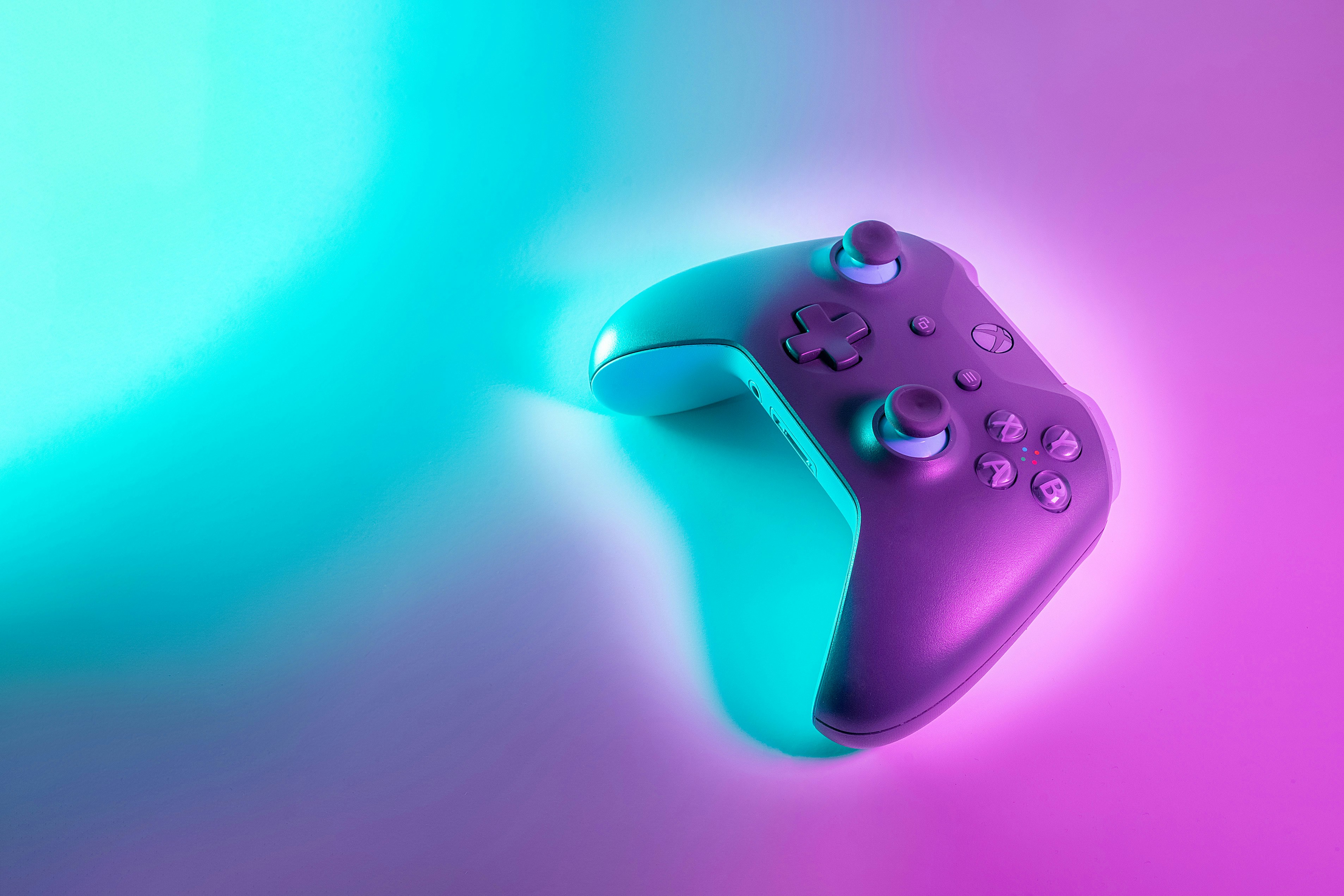Understanding Frame Rates
If you’re an avid gamer, you may have encountered the frustrating issue of low frame rates during gameplay. But fear not! Understanding frame rates and implementing the right techniques can significantly improve your gaming experience.
Definition of frame rate
Frame rate refers to the number of frames or images that are displayed per second on your screen. It is usually measured in frames per second (FPS). A higher frame rate results in smoother and more fluid gameplay, while a lower frame rate can lead to lag and choppy visuals.
Importance of frame rate in gaming
A high frame rate is crucial for a seamless gaming experience. It ensures that your movements and actions are accurately represented on the screen, providing you with more precise control and responsiveness. Additionally, a higher frame rate enhances immersion and makes the graphics appear more lifelike.
Common frame rate targets
In gaming, there are common frame rate targets that players aim for. Console games typically aim for 30 FPS, while PC gamers strive for higher rates, such as 60 FPS or even 144 FPS. Achieving these targets can enhance gameplay by reducing input lag and providing smoother visuals.
By understanding the significance of frame rates in gaming and employing various methods to improve them, you can elevate your gaming experience and immerse yourself fully in the virtual world. Keep reading to explore effective techniques that can help you achieve higher frame rates and enjoy your games to the fullest.
Factors Affecting Frame Rates
If you’re frustrated with your gaming experience due to low frame rates, don’t worry! There are several factors that could be impacting your gaming frame rate, but with a little tweaking, you can improve your gameplay.
Hardware Limitations
Your hardware plays a significant role in determining your frame rates. If you’re using outdated or low-end equipment, it might struggle to handle demanding games. Consider upgrading your graphics card, increasing your RAM, or investing in a more powerful CPU to improve your gaming performance.
Software Optimizations
Optimizing your software can also have a noticeable impact on frame rates. Ensure that you have the latest game updates and patches installed. Keep your operating system up to date and minimize the number of background processes running while gaming. Additionally, closing unnecessary applications or programs can free up system resources, resulting in improved frame rates.
Graphic Settings
Adjusting your graphic settings can significantly impact your frame rates. Experiment with lowering the resolution, reducing anti-aliasing, or disabling advanced graphical effects. While you may have to compromise on visual quality, these adjustments can significantly improve your gaming experience.
Overheating Issues
Overheating can cause your hardware to throttle performance, resulting in lower frame rates. Ensure that your system is adequately cooled by cleaning dust from the fans and vents and ensuring proper airflow. Consider using a laptop cooling pad or investing in additional case fans if necessary.
Outdated Drivers
Outdated drivers can sometimes negatively impact frame rates. Regularly update your graphics card drivers, as newer versions often include performance optimizations, bug fixes, and compatibility improvements. Check the manufacturer’s website or use automatic driver update utilities to ensure you have the latest drivers installed.
By addressing these factors affecting frame rates, you can significantly enhance your gaming experience. Experiment with these methods to find the best combination that works for you, and say goodbye to those frustrating low frame rates.
This image is property of images.unsplash.com.
## Optimizing Hardware for Better Frame Rates
Is your gaming experience suffering from low frame rates? Don’t worry, there are several methods you can explore to improve your gaming frame rate and enhance your gameplay. One of the first areas to consider is optimizing your hardware.
Upgrading CPU
The CPU (Central Processing Unit) plays a significant role in determining your computer’s overall performance, including frame rate. Consider upgrading your CPU to a more powerful model that can handle the demands of modern games. A faster CPU will provide smoother and more responsive gameplay.
Increasing RAM
Insufficient RAM (Random Access Memory) can often be a cause of low frame rates. Upgrading your RAM can significantly improve your gaming performance, as it allows your computer to handle more data simultaneously. The more RAM you have, the better your frame rate will be.
Investing in a high-performance GPU
The GPU (Graphics Processing Unit) is responsible for rendering graphics in games. If you’re experiencing low frame rates, it’s worth investing in a high-performance GPU that can handle the latest games with ease. A more powerful GPU will ensure smoother and more detailed visuals, leading to a better gaming experience.
Using an SSD
Consider upgrading to a Solid-State Drive (SSD) if you haven’t already. An SSD can dramatically improve your gaming frame rate by reducing load times and enhancing data transfer speeds. With faster access to game files, your computer can render frames more efficiently, resulting in a smoother gameplay experience.
Overclocking techniques
Overclocking is the process of increasing the clock speed of your hardware components, such as the CPU or GPU, to squeeze out more performance. However, this option should be approached with caution, as it can potentially cause instability if done incorrectly. If you’re comfortable with advanced tweaking, overclocking can provide a noticeable boost in frame rates.
By optimizing your hardware through upgrading your CPU, increasing RAM, investing in a high-performance GPU, using an SSD, or experimenting with overclocking techniques, you can significantly improve your gaming frame rate and enjoy a smoother, more immersive gameplay experience.
Software Solutions to Enhance Frame Rates
Are you tired of experiencing low frame rates while gaming? Don’t worry! There are several software solutions that can significantly improve your gaming frame rate, giving you a smoother and more enjoyable gaming experience.
Closing background processes
One effective method to enhance your frame rates is by closing unnecessary background processes that might be consuming system resources. These processes can hog your CPU and memory, resulting in lower frame rates. By closing these processes, you free up valuable resources, allowing your game to run more efficiently.
Updating drivers
Outdated graphics drivers can often be a cause of low frame rates. It is crucial to keep your drivers up to date to ensure better performance. Regularly check for driver updates from your graphics card manufacturer and install them promptly to enjoy optimal frame rates.
Reducing visual effects
Visual effects in games can sometimes have a significant impact on frame rates. By reducing or disabling certain visual effects, you can enhance your frame rates. Experiment with different settings to find the perfect balance between visual quality and smooth gameplay.
Adjusting power settings
Your computer’s power settings can affect your gaming frame rates. Make sure your power settings are set to high performance mode, as this allows your system to fully utilize its resources, resulting in improved frame rates.
Using performance-enhancing software
There are several software programs available that are specifically designed to improve gaming performance. These programs optimize your system settings, increase your frame rates, and reduce input lag. Consider using such software to enhance your gaming experience.
By implementing these software solutions, you can boost your gaming frame rates and enjoy smoother gameplay. Give them a try and see the difference for yourself!
Optimal Graphic Settings for Improving Frame Rates
Adjusting resolution
One of the most effective ways to improve your gaming frame rate is by adjusting the resolution of your game. Lowering the resolution can reduce the strain on your system, allowing it to render frames more quickly. While this may result in slightly less sharp visuals, it can significantly improve the smoothness of your gameplay.
Lowering texture quality
Another way to enhance your frame rate is by lowering the texture quality of the game. Textures are the detailed images that are applied to objects in the game world. By reducing their quality, you can ensure that your system doesn’t have to work as hard to render them, resulting in improved frame rates.
Reducing shadow and lighting effects
The shadows and lighting effects in games can be visually stunning, but they can also put a lot of stress on your system. By reducing the intensity or disabling these effects, you can give your system a break and enjoy smoother gameplay.
Disabling anti-aliasing
Anti-aliasing is a feature that helps smooth out jagged edges in games, but it can be resource-intensive. Disabling this feature can free up some processing power, leading to improved frame rates.
Turning off VSync
VSync is a setting that syncs the frame rate of the game with your monitor’s refresh rate. While this can prevent screen tearing, it can also impact your frame rate. Turning off VSync can often result in a noticeable increase in frame rates.
By adjusting these graphic settings, you can optimize your gaming experience and enjoy smoother frame rates. Experiment with these options to find the right balance between visual quality and performance for your system.
This image is property of images.unsplash.com.
## Avoiding Overheating Issues
Overheating can often be a cause of low frame rates in gaming. When your gaming system overheats, it struggles to maintain optimal performance, resulting in a drop in frame rates. To tackle this issue, there are several methods you can explore.
Cleaning the internal components
Dust accumulation can disrupt airflow and cause your system to overheat. Regularly clean the internal components, like fans, heat sinks, and vents, to ensure proper cooling. Use compressed air or a soft brush to remove the dust, being careful not to damage any delicate parts.
Improving ventilation
Ensuring good airflow is crucial for preventing overheating. Position your gaming setup in a well-ventilated area, away from obstructions. You can also consider investing in additional case fans or upgrading your existing ones for better cooling performance.
Using cooling pads or fans
If your laptop tends to overheat during gaming sessions, using a cooling pad can help dissipate heat more efficiently. These pads have built-in fans that provide extra airflow to cool down your system.
Avoiding overclocking if overheating persists
Overclocking your CPU or GPU may offer performance boosts, but it also generates more heat. If you are consistently experiencing high temperatures even after trying other methods, it might be best to avoid overclocking entirely to prevent further overheating issues.
Implementing these methods will help you combat overheating problems, translating into improved gaming performance with smoother frame rates.
The Importance of Updated Drivers
Checking for driver updates
One of the key factors affecting your gaming frame rate is the status of your graphics card drivers. Outdated drivers can often lead to lower frame rates and poor performance in games. It is essential to regularly check for updates to ensure your drivers are up to date.
Downloading and installing the latest drivers
To improve your gaming frame rate, you should download the latest drivers from the official website of your graphics card manufacturer. Visit their support page and search for the appropriate driver for your specific graphics card model. Once downloaded, follow the installation instructions provided by the manufacturer to install the updated drivers.
Using driver update software
If manually checking for updates sounds daunting or time-consuming, you can opt for driver update software. These tools automatically scan your system for outdated drivers and help you download and install the latest versions. They provide a convenient way to ensure that all of your drivers, including graphics card drivers, are always up to date.
Properly updating your drivers can significantly improve your gaming frame rate and overall gaming experience. Make sure to regularly check for updates or use driver update software for a hassle-free and optimized gaming performance.
Reducing System Background Processes
Identifying resource-intensive processes
If you are struggling with low frame rates while gaming, one possible reason could be the presence of resource-intensive processes running in the background of your system. These processes consume valuable system resources, leaving less power for your game to run smoothly. To identify these processes, you can open the task manager and check which ones are using a significant amount of CPU or memory.
Closing unnecessary applications
Once you have identified the resource-intensive processes, you can start closing unnecessary applications that are running in the background. Close any unused web browsers, music players, or software that you don’t need while gaming. These applications can hog system resources, negatively impacting your frame rate.
Disabling startup programs
Another effective method to reduce background processes is by disabling startup programs. Many applications automatically launch when you start your computer, consuming resources before you even launch your game. To disable these startup programs, you can open the task manager and head to the startup tab, where you can disable unnecessary programs from starting with your computer.
By reducing system background processes, you can optimize your system’s resources and improve gaming frame rate for a smoother and more enjoyable gaming experience.
Power Settings and Performance
Are you frustrated by low frame rates while playing your favorite games? Don’t worry, there are several methods you can explore to improve your gaming frame rate. One important aspect to consider is optimizing your power settings to ensure maximum performance.
Setting power mode to high performance
Adjusting your power mode to high performance can significantly boost your gaming experience. This setting prioritizes performance over energy conservation, allowing your system to utilize its full potential. By doing so, you can ensure that your games run smoothly without any lag or stuttering.
Adjusting power settings for specific games
Another effective method is adjusting your power settings specifically for certain games. Sometimes, your operating system’s default power settings might not be optimized for gaming. You can manually customize the power options for individual games, allowing you to allocate more resources and increase the frame rate.
Preventing automatic system sleep or hibernation
Automatic system sleep or hibernation can interrupt your gaming session and cause a drop in frame rates. To prevent this, modify your power settings to disable automatic sleep or hibernation while playing games. This way, you can ensure uninterrupted gameplay and maintain a consistent frame rate.
By optimizing your power settings, you can significantly improve your gaming frame rate and have a smoother gaming experience overall. So, don’t let low frame rates hold you back from enjoying your favorite games to the fullest extent.
This image is property of images.unsplash.com.
If you’re tired of experiencing low frame rates while gaming, there are several methods you can explore to improve your gaming frame rate. One effective approach is to utilize performance-enhancing software, which can help optimize your system and enhance your gaming experience.
Advanced system optimization tools
To start, you can make use of advanced system optimization tools. These software applications are specifically designed to clean up your system, remove unnecessary files, and optimize resources. By doing so, they can help improve your computer’s overall performance, as well as enhance your gaming frame rate.
Game optimization software
Another option is to utilize game optimization software. These programs are specifically designed to analyze your computer’s hardware and software configurations and provide the best settings for optimal gaming performance. They can help identify performance bottlenecks, optimize your game settings, and prioritize system resources for improved frame rates.
Benchmarking utilities
Lastly, you can utilize benchmarking utilities to assess your current gaming performance and identify areas that need improvement. These utilities can provide detailed reports on your computer’s performance, including frame rates, CPU and GPU utilization, and temperature data. Armed with this information, you can make informed decisions on how to optimize your system and improve your gaming frame rate.
By exploring these performance-enhancing software options, you can overcome low frame rates and ensure a smooth and enjoyable gaming experience.



